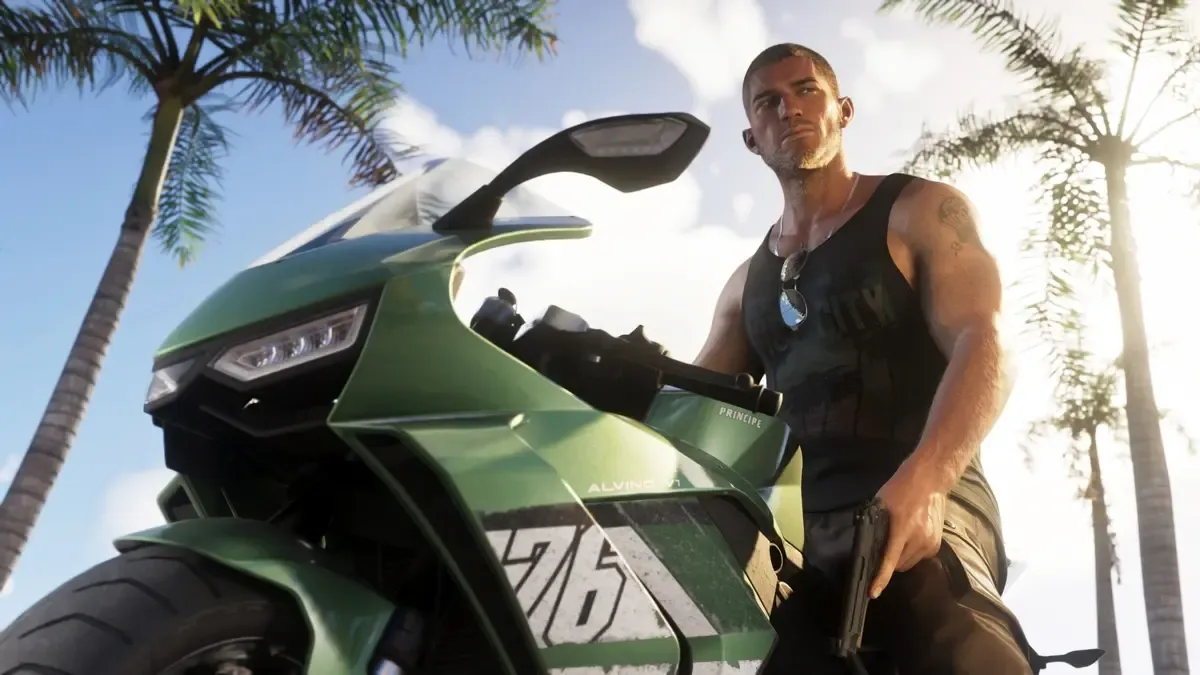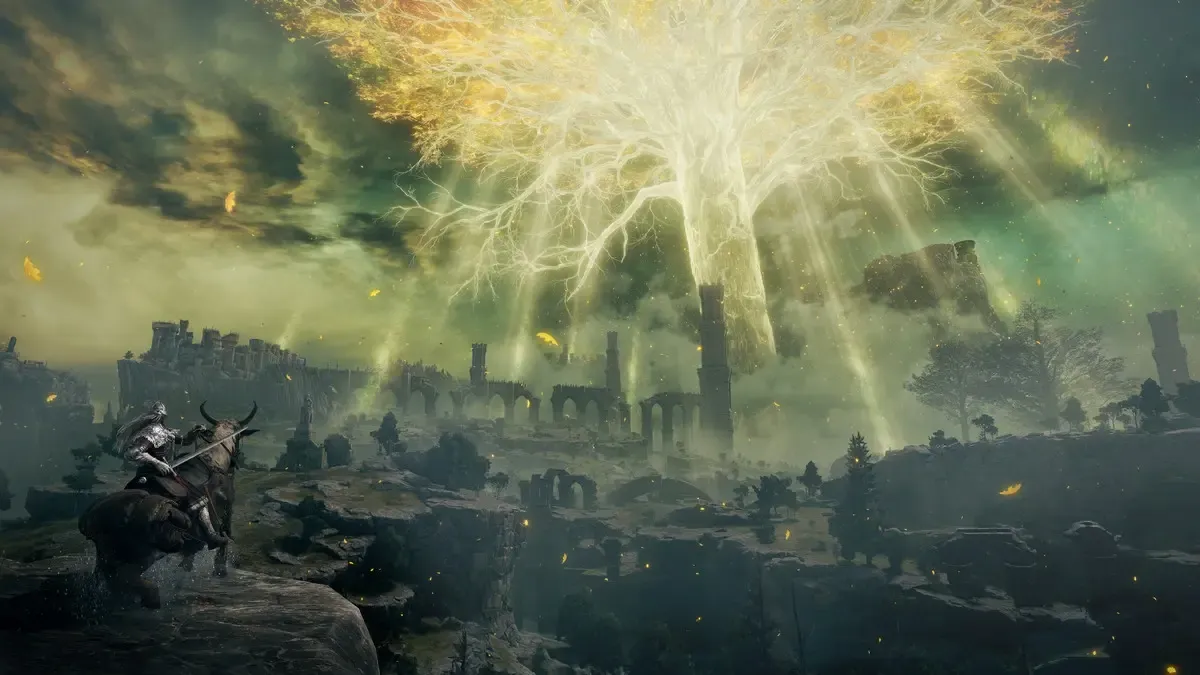Image: Ubisoft
Avatar: Frontiers of Pandora is basically Far Cry in space, and that's not a bad thing at all.
If you walked out of your first Avatar screening wowed to the point of wishing you could live in Pandora yourself, you aren’t alone. Avatar (2009) has crossed nearly $3 billion in the global box office to date for a reason: people love watching the spectacle of Pandora's fully computer-generated alien world come to fruition on the big screen. Pandora feels like a magical place to exist in despite its many dangers, but we only seem to revisit its inhabitants every decade or so. Spending two and a half hours in Pandora whenever a new movie comes out doesn't give viewers nearly enough time to fully soak in its alien wonders.
While those sequels chug along, however, we’ve got the next best thing - Avatar: Frontiers of Pandora, a game that finally lets you live in Pandora to the fullest extent humanity is currently able to accommodate. Pandora is a sprawling, jaw-droppingly beautiful place to explore in this open-world game, which encourages player immersion to a degree I haven’t seen Ubisoft attempt in years. For Avatar fans, it’s a guaranteed hit. For everyone else, however, the sheer beauty of its world will have to do a lot of heavy lifting to overcome the tedium of its repetitive missions, dull campaign, and forgettable characters. It's strange to see Ubisoft push the boundaries of its usual open-world design here, but leave all other criticism of its recent games unaddressed.
Na'vi separated from their culture

The Avatar films are not exactly looked upon as the apex of emotional storytelling - that’s just not what they're trying to achieve. It’s the worldbuilding, the technical achievements, and the sheer might of big-budget spectacle that gets butts into theater seats. In that way, Avatar: Frontiers of Pandora is very similar to its source material. My enjoyment of the game was mostly reaped from running and jumping through Pandora, hunting monsters, and soaring through the skies - not so much from meeting the people who live there.
Frontiers of Pandora begins eight long years before the events of the first movie, with the human RDA setting up a program to train five Na’vi kids to become future ambassadors between both species. These kids eventually learn that they were kidnapped from their clans - a big surprise - and attempt an escape to tragic results. When Jake Sully eventually pushes the RDA off Pandora eight years later, however, the program’s head and resident villain John Mercer orders the kids to be killed. Instead of killing the kids, their softhearted guardian places them in cryogenic suspension to keep them safe.

Another sixteen-year-long timeskip later (around the time the sequel movie is set), a Na’vi resistance group breaks the kids out of their cryogenic prison while Mercer returns to rid the base of any loose ends. The protagonist is revealed to be a Sarentu, the last of their clan, and must now reunite with their friends and become less of a stranger in their own home. If all this buildup to setting foot in Pandora for the first time sounds clumsy, that’s because it is! The story has to work around a lot of movie canon to make its fish-out-of-water premise work, because it really wants you to play as a Na’vi native to Pandora who doesn't know anything about Pandora at all.
The story is disappointingly by-the-numbers, considering that this was Ubisoft’s best shot at extracting a worthy plot from the franchise at long last. We have dozens of hours to live with these characters, but I walked away with a stronger impression of the world and how it functions around them. The Sarentu shares a strong bond with the friends they grew up with in the RDA base, and that’s the closest thing this game has to a beating heart. The saccharine dialogue they’re dealt does them no favours, however. Everyone is far too happy after having been kept in captivity for decades, and none seem too eager to deal with the ever-looming RDA threat. Stopping a war and saving the planet take a backseat to hunting animals and learning about one’s culture, which doesn’t quite make sense.
Explore Pandora to your heart's content

Frontiers of Pandora plays like Far Cry in space, and that’s not a bad thing at all - I happen to like the ol’ Far Cry formula. There is a heavy emphasis on gathering resources here, whether that means hunting the diverse fauna inhabiting this side of Pandora or pulling various plant bulbs out of their organic sockets. Where Far Cry was more about mastering a dangerous land however, this game is more about attuning with it and engaging with a cycle of life that’s been revolving without you for eons. When you gather plants, there’s a little minigame where you try to tug at them from the right direction before tearing them off as gently as possible. When you hunt an animal, you offer a little prayer to Eywa before taking their meat.
Resource gathering doesn’t feel as in-depth here as it does in, say, Red Dead Redemption 2, but it’s tactile enough to keep you immersed - though seeing the exact same animations play out after killing your hundredth animal or pluck the millionth tree gets repetitive. Killing animals mercifully and gently harvesting materials from trees earns a higher bonus on your resources, which in turn can be used for crafting, cooking, eating, or simply donating to various clans for vendor rewards. Cooking is rather important in this game too, and it is by far my favourite thing to do: you simply combine two ingredients together and get a little meal to stave off hunger, which can affect your healing. Watching the Sarentu hum a little tune while baking off a few meals does make me feel more at home in this alien world.

Ubisoft’s efforts to further immerse you in Pandora extend beyond a few simple hunting mechanics, however. Gone are the map markers that tell players exactly where they need to go and what they need to do during a quest. Instead, players are given a rough area to look for when given a quest, and told to explore for themselves to find their objective - or turn on their ‘Na’vi senses’ to find it immediately. The choice is yours, and while I definitely turned to my Na’vi senses a few times, I found that the open world was largely designed around the player bumbling their way through things. The path forward is often readable even if you’re not looking at the map.
This works particularly well due to how utterly beautiful Pandora is in gameplay. It’s a tall order to bring the CGI-heavy creation of Avatar’s digital artists over at WETA to life in a videogame, but Ubisoft has done a great job here. The sheer diversity of flora and fauna on the planet is jawdropping, especially since everything looks so distinctly not of Earth, separating this game from the publisher's recent open-world catalog. The moss-crawled forest floors and rocky mountains make the RDA’s mech suits and assault rifles look that much more out of place, which is entirely the point - they don’t belong here, but you do. Pinar Toprak’s music is also a standout here, creating a soundtrack that stands up to James Horner's music for the 2009 movie and makes your first soaring flight in the skies above Pandora truly magical.
Wait… is this just Far Cry in space?

You’ll spend just as much time shooting as you do scavenging in Frontiers of Pandora, so let’s talk about the shooting. The player gets to wield both human and Na’vi weapons in this game, which means that you’ll have a mix of bows and guns to use in the fight against the RDA. The guns don’t feel as satisfyingly punchy as the powerful Na’vi longbows and sharpshooter bows, but they do their job against the tanky mech suits you’ll encounter across the map. Human soldiers are hilariously easy to take down when you’re a hulking blue alien, but the mech suits can get really annoying if you’re dealing with more than two at once.
The RDA outposts you take down throughout Pandora feel far too reminiscent of Far Cry’s enemy bases for me to have any satisfaction in wiping them out. For all intents and purposes, they’re exactly the same thing: bases filled with enemies you’re encouraged to stealth through while ticking off various objectives to unlock a fast travel point. The repetitive nature of these outposts made me want to ignore them altogether if I’m being honest, but they’re also the best combat arenas the game has to offer.

Combat can be really fun if the player chooses to make use of all their gadgets. The hilariously huge glass window in mech suits meant to shield their pilots can be shattered for an instant takedown, while sharpshooter bows work very well against distant threats and flying gunships. You’re also given a little hacking gadget that lets you take down electronic devices set up by the RDA - such as gun turrets - to make things easier. I really don’t like the repetitive hacking minigame this device requires for use, so I tried to go without it most of the time. When bows and guns are combined with stealth and grenades, combat can be a lot of fun. It’s not as satisfying as Ubisoft’s other games, but it does the job.
What really brings the Na’vi experience home is player traversal. Pandora is dense with foliage of all kinds - from massive tree trunks the size of cars acting as bridges, to vines that carry players to greater heights by touch alone - and the Sarentu uses all of them in addition to their own abilities, like double jumps and mid-air dashes, to propel themselves across the map at high speeds. The first-person parkour feels very Dying Light-inspired and it’s a great deal of fun, allowing you to dash across tree lines and parkour off branches and logs to close in on one enemy and get away from the next.
Verdict

Avatar: Frontiers of Pandora is a gorgeous escape into the world of Pandora, destined to whet the appetites of hungry Avatar fans left bereft in the years-long wait between theatrical sequels. For everyone else, however, your enjoyment of the game will largely depend on how much you can bear its Far Cry-esque approach to rote enemy outposts, and its uninspired plot starring a boilerplate RDA villain. At least the Avatar movies had a scenery-chewing, fairly out-of-his-mind antagonist in the Colonel, but Mercer’s scheming barely merits a mention here.
The characters you meet are forgettable, the sidequests are hardly worth doing and the gear system only serves to keep you from getting to the meat of the story too early. These are all issues that nagged at me throughout my time in Pandora, but the beauty of its world and the small changes to Ubisoft’s now-infamous open-world formula kept me going. If the developer’s next world skews closer to this level of immersion, it will be a much-needed step in the right direction.







